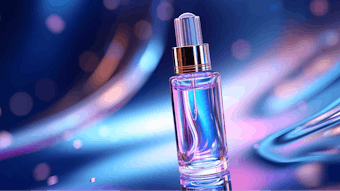An emulsion is a mixture in which two immiscible substances, like oil and water, stay mixed together thanks to a third substance called an emulsifier. Generally, mechanical action is required to make the droplets small enough to remain stable. Homogenizers, colloid mills and many other types of equipment often are used.
When a cosmetic chemist thinks of an emulsion, likely the first thing that comes to mind is a dispersion of oily materials in an aqueous medium. Oil-in-water (o/w) emulsions are the most common type in cosmetics and personal care for many reasons. There are a relatively large number of o/w emulsifiers available to the cosmetic chemist, which allow for a wide variety of different formulations.
O/W emulsions are relatively easy to formulate and manufacture and they can have a wide variety of textures and properties. However, all emulsions will break up given enough time. The key to designing products is knowing how long it takes for the emulsion to return to the more energetically-favorable oil and water split.
Invert emulsions are "backwards" emulsions. The aqueous phase is dispersed in the nonaqueous phase. While this type of emulsion has largely taken a back seat to standard emulsions, some of the oldest cosmetic formulas are invert emulsions. For example, the classic beeswax/borax cold cream formula has been around forever.
Invert emulsions have advantages over the o/w type. Many ingredients can be used in the external phase, as opposed to water being the only external phase allowed in a o/w emulsion. Mineral oil, vegetable oils, esters and silicone waxes and liquids all have been used in invert emulsions. With invert emulsions, properties such as initial feel, spreadability and substantivity can be tailored more precisely to the needs of the product.
There are still more o/w emulsifiers available than w/o emulsifiers but the need for improved performance has encouraged many companies to develop new and effective invert emulsifiers. Silicone -based emulsifiers are one of the new breeds. Silicone surfactants allow the formulator to tailor external phases to the precise needs of new and improved products such as substantive sunscreens.
In many emulsions, the ratio of oil to water often is 1:1; this means that the emulsifier is often the deciding factor in the type of emulsion formed. There are meta-stable emulsions on the market that invert from o/w to w/o as the water phase evaporates from the skin. The resulting product gives improved water resistance.
In the personal care industry, there is still great potential for creative cosmetic chemists to develop improved emulsions that provide consumer-perceivable advantages over what is currently available.










